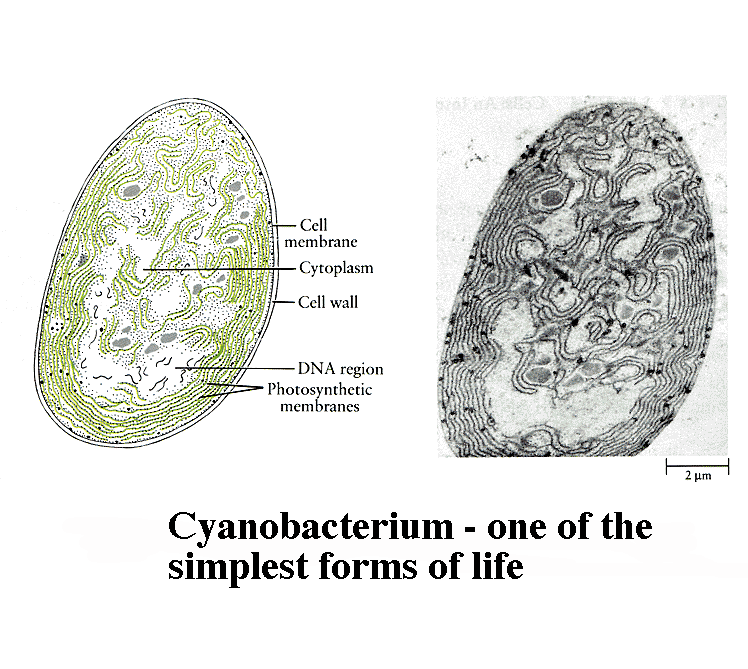

Living organisms, in contrast to nonliving matter, are able to:
a. replicateb. store and process energy (metabolism)
c. store and process information
no "primitive" or "simple" form of life?
"We now know not only of the existence of a break between the living and non-living world, but also that it represents the most dramatic and fundamental of all the discontinuities of nature. Between a living cell and the most highly ordered non-biological system, such as a crystal or snowflake, there is a chasm as vast and absolute as it is possible to conceive."
M. Denton, Evolution: A Theory in Crisis, pg 250.
"After all what impresses us about a living thing is its in-built ingenuity, its appearance of having been designed, thought out - of having been put together with purpose. .... The singular feature is the [enormous] gap between the simplest conceivable version of organisms as we know them, and components that the Earth might have reasonably been able to generate.... But the real trouble arises because too much of the complexity seems to be necessary to the whole way in which organisms work."
A. G. Cairns-Smith, "Seven Clues to the Origin of Life"
Mycoplasmas - simplest free living organisms we know - 0.5 million base pairs -
recent study indicates a lower threshold of 265-350 genes for viabilityIrreducible or minimal complexity